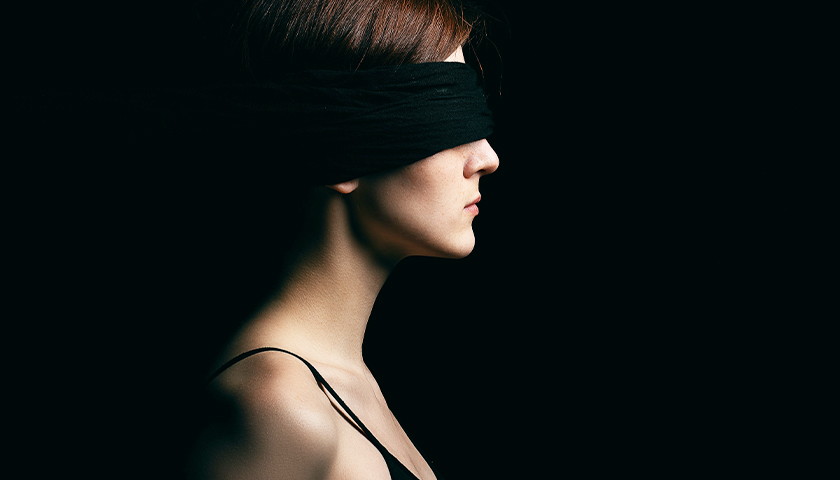by Ross Pomeroy
Vision is the primary way that humans sense the world, so what happens when you suddenly strip sight away? In 2004, researchers at Harvard Medical School found out.
Alvaro Pascual-Leone, a Professor of Neurology, led a team that blindfolded thirteen healthy young adults for 96 hours straight. During that time, as part of a broader study, participants were taught braille for four hours a day, engaged in tactile stimulation activities like puzzles and clay modeling, took daily brain scans, and otherwise lived their lives – they got dressed, they ate, they walked around, and they went to the gym, all in total, numbing darkness.
“A specially designed blindfold was worn that prevented all light perception,” the researchers described. “It was held in place by a Velcro strap and further secured by Ace bandages. The blindfold permitted full motion of the eyes as well as opening and closing of eyelids. Potential tampering with the blindfold by the subjects was controlled with the use of a piece of photographic paper attached to the inside of the blindfold.”
During their time deprived of vision, the subjects documented their thoughts, feelings, and perceptions with an audio recorder. The researchers were amazed when they listened to the recordings and learned what participants experienced.
Ten of the thirteen witnessed sudden, uncontrollable visual hallucinations that generally began between the first and second day. A 29-year-old woman saw a terrifying green face with big eyes when standing in front of what she knew to be a mirror. A 24-year-old man saw mirrors, lamps, trees, and full, bright landscapes. A 24-year-old woman saw a splotch of light “in the exact form of Elvis Presley”. A 23-year-old man witnessed outlines of moving puzzle pieces that “warped into other amorphous shapes”. A 20-year-old woman reported seeing a “butterfly that became a sunset, an otter, and finally a flower. She also reported seeing “cities, skies, kaleidoscopes, lions, and sunsets”. The vast majority of the subjects who hallucinated also saw flashing lights at various times.
All of the hallucinations occurred when subjects were awake. Their blindfolding did not seem to affect their sleep nor their dreams.
Pascual-Leone actually wasn’t surprised at hearing of the vivid hallucinations. “This is what the brain does. It makes up stories; it conjures up imagery. Our brain plays with us continually,” he told science communicator Jackie Higgins for her new book Sentient: How Animals Illuminate the Wonder of Our Human Senses.
He was more surprised, however, at the results of subjects’ brain scans.
“By day two, the scans showed that the volunteers’ brains were already starting to change. By day five, touch was stimulating the brain’s visual cortex,” Higgins described.
The brain was learning to rely more on touch than sight.
“They were seeing with the tip of their finger,” Pascual-Leone recalled. “I was expecting changes, but not this rapid.”
As Higgins wrote in Sentient:
He surmises that the connections must have already been there and that the experiment simply unmasked them – evidence not merely in favor of exceptional neuroplasticity but of a whole new way of looking at the brain. What neuroscientists have called the visual cortex for the past century seems not to be devoted exclusively to the eyes. Pascual-Leone wonders whether it might more accurately be defined as the area of the brain best able to discriminate spatial relationships and that it will use any relevant sensory input.
This is further evidence that the brain’s overarching function is to interpret reality, and it will rapidly reorganize itself to accomplish this goal no matter where the external information comes from, whether sight, sound, or touch.
– – –
Ross Pomeroy contributes to RealClearScience.





